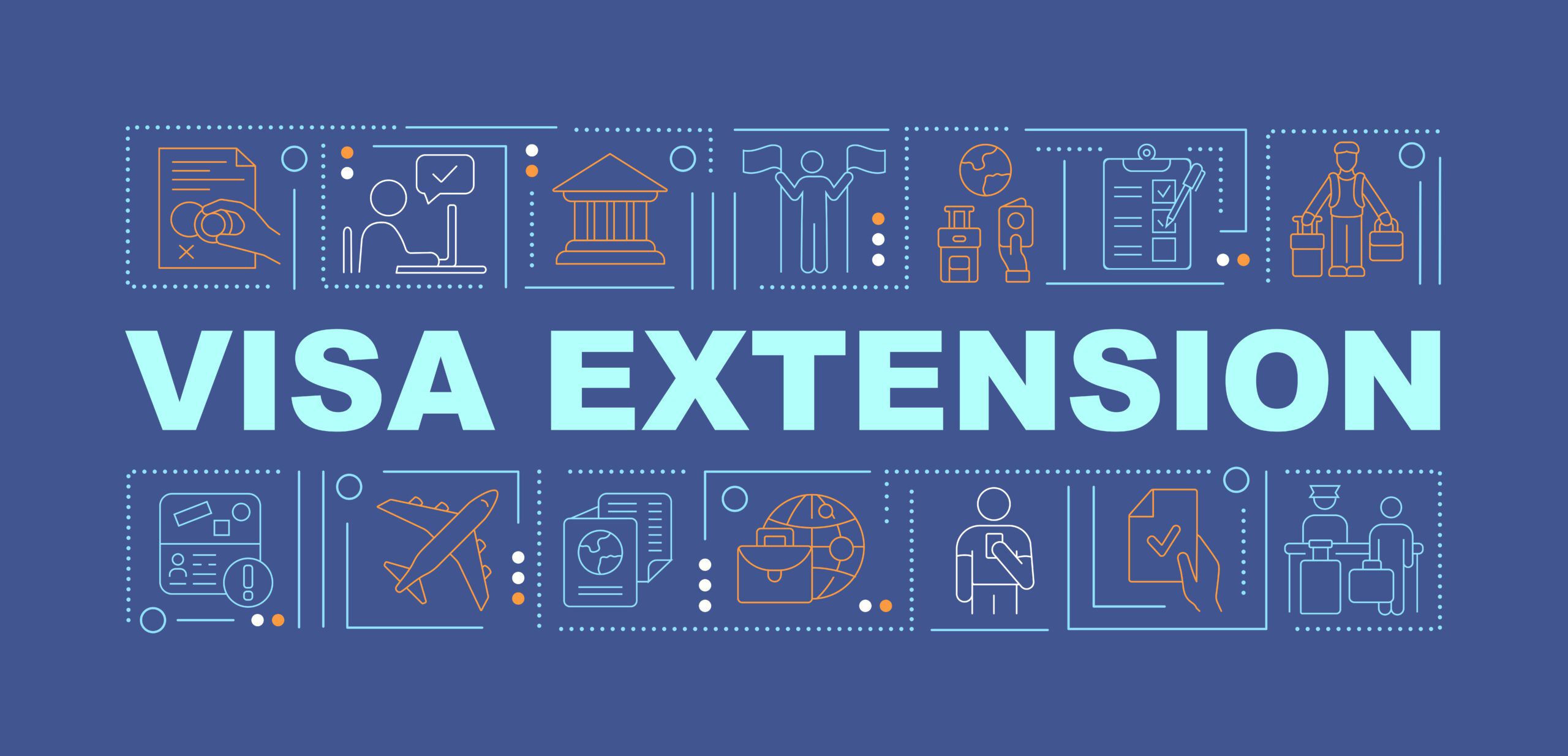The pursuit of employment-based immigration in the United States is often laden with challenges, complexities, and uncertainties. From navigating visa categories to addressing documentation requirements and legal procedures, individuals face numerous obstacles along the way. In this guide, we explore strategies for overcoming these challenges, including understanding visa categories, preparing for documentation hurdles, and allocating resources to leverage legal remedies. Join us as we equip you with the knowledge and strategies needed to confidently navigate the United States employment-based immigration process and achieve your immigration goals.
Please remember that this article does not provide any legal advice and if you would like to discuss your immigration situation, please speak with the immigration attorney. If you would like to speak with our lawyer, please contact us here.
Bon Voyage: Exploring Key Employment-Based Visa Categories
According to the U.S. Citizenship and Immigration Services (USCIS), employment-based immigration in the United States encompasses various visa categories tailored to accommodate the diverse needs of employers and foreign workers. Understanding the nuances of each category is essential for navigating the immigration process effectively. Here are the key employment-based visa categories:
| Categories | Description |
| H-1B Visa: Specialty Occupations (non-immigrant visa) | For foreign workers in specialized fields like IT, engineering, medicine, etc.Eligibility: Requires theoretical or technical expertise in the field.Application Process: Apply through an employer sponsor.Quota Considerations: A limited number of H-1B visas are available annually. |
| L-1 Visa: Intracompany Transferees(non-immigrant visa) | Facilitates temporary transfer of foreign employees within a company.Eligibility: Requires employment with a foreign company’s U.S. branch, subsidiary, or affiliate.Requirements: This may include managerial, executive, or specialized knowledge roles. |
| O-1A visa: Extraordinary Ability, knowns as talent visa (non-immigrant visa) | Reserved for individuals with extraordinary abilities.Eligibility: Demonstrating extraordinary ability, significant contributions to the field.Can be sponsored by the company where the founder is a shareholder. |
| EB-1 Visa: Extraordinary Ability, Outstanding Professors, and Researchers(immigrant visa/green card) | Reserved for individuals with extraordinary abilities, outstanding professors, researchers, or multinational executives/managers.Eligibility: Demonstrating extraordinary ability, outstanding academic achievements, or significant contributions to the field. |
| EB-2 Visa: Professionals with Advanced Degrees or Exceptional Ability(immigrant visa/green card) | For professionals with advanced degrees or exceptional ability in their fields.Eligibility: Requires advanced degrees, exceptional skills, or significant achievements.Requirements: Educational credentials, work experience, and evidence of exceptional ability. |
| EB-3 Visa: Skilled Workers, Professionals, and Other Workers(immigrant visa/green card) | For skilled workers, professionals, and others not eligible for EB-1 or EB-2.Eligibility: Requires job offer and labor certification.Categories: Includes skilled workers, professionals, and other workers. |
Understanding the distinctions between these categories is crucial for selecting the most suitable option within the visa system based on individual qualifications and employment opportunities.
Overcoming Obstacles: Strategies for Common Immigration Challenges
While the United States employment-based immigration system offers numerous lawful opportunities for foreign workers and employers, it is not without its challenges. One of the most common obstacles is the need to meet the stringent requirements set by USCIS, the Department of Homeland Security, and other relevant agencies, demanding meticulous attention to detail and a thorough understanding of the application process. In response to these challenges, applicants must employ strategic approaches to address each obstacle effectively, involving proactive planning, careful documentation, and seeking professional guidance when needed. By understanding the nuances of the immigration sector and implementing tailored strategies, individuals can navigate through these challenges with confidence and resilience.
We’ve already delved into the various visa categories and their descriptions. Now, it’s time to immerse ourselves in the specific immigration challenges. Throughout the next sections, we will explore actionable insights and practical advice to help applicants overcome common immigration hurdles and achieve their desired outcomes in the employment-based immigration journey.
Navigating the Paper Trail: Mastering the Immigrant Documentation Demands
Documenting one’s eligibility for employment-based immigration in the United States is a critical aspect of the process. Here are some strategies to help overcome common documentation challenges:
- Start Early and Stay Organized: Create a checklist and maintain an organized file system.
- Obtain Certified Translations: Ensure accurate translations for non-English documents.
- Verify Educational Credentials: Confirm credentials from accredited institutions.
- Provide Detailed Employment Records: Obtain letters of employment verification from previous employers.
- Prepare Persuasive Supporting Evidence: Include letters of recommendation, achievements, awards, and publications.
- Anticipate USCIS Requirements: Familiarize yourself with USCIS guidelines and stay updated on adjudication trends and policy changes.
- Seek Legal Guidance: An attorney can provide personalized guidance, review documentation for accuracy and completeness, and address any potential red flags or concerns.
By implementing these strategies and investing time and effort into thorough documentation preparation, applicants can mitigate the risk of delays, RFEs, or denials in the process.
Breaking Barriers: Pathway for Visa Quotas and Backlogs
Quotas and backlogs can present significant challenges for individuals seeking employment-based immigration to the United States. Here are strategies for navigating these obstacles effectively:
1. Stay Updated:
- Check the Visa Bulletin regularly.
- Understand the categories and priority dates.
2. Explore Options:
- Look into alternative application categories.
- Get advice from an immigration lawyer.
3. Seek Faster Processing:
- See if you qualify for expedited processing.
- Request faster processing for urgent reasons.
4. Plan Ahead:
- Keep your legal immigrant status valid.
- Consider transferring a priority date if eligible.
5. Advocate for Reform:
- Support efforts to change the immigration system.
- Push for policies based on economic needs.
6. Stay Patient:
- Understand that processing times can vary.
- Be patient and adaptable throughout the process.
American Dreamer Victory: Tips for Acing Your Visa Interview
The interview is crucial for United States immigration, where consular officers assess applicants’ eligibility. Here’s how to prepare:
| Interview Preparation Tips | Description |
| Understand the Purpose of the Interview | Familiarize yourself with the objectives of the interview, including verifying application information, assessing eligibility, and evaluating ties to your home country. |
| Review Visa Requirements and Documentation | Thoroughly review the requirements for your category and gather the necessary documents.Ensure they’re organized and up-to-date for easy presentation during the interview. |
| Practice Interview Questions | Prepare for common interview questions about your background, qualifications, and intentions for traveling to the United States. |
| Demonstrate Genuine Intentions and Credibility | Be truthful and provide evidence supporting your reasons for visiting the country, such as employment offers or business plans. |
| Address Potential Red Flags Proactively | Be ready to explain any concerns raised by the interviewer, like gaps in employment or previous application denials. |
| Dress and Behave Professionally | Dress professionally and maintain a polite demeanor during the interview. Show respect for the process and the interviewer. |
| Remain Calm and Confident | Stay composed and confident, even if faced with challenging questions.Project confidence in your responses and eligibility for the petition. |
| Follow Instructions and Etiquette | Listen carefully to instructions, avoid interruptions or arguments, and adhere to interview etiquette. |
Responding with Resilience: Handling Requests for Evidence (RFEs)
Requests for Evidence (RFEs) are issued by USCIS when additional documentation or information is required to adjudicate a visa application or petition. Understanding the root causes behind these requests is essential for effectively navigating this process. Here are some practical tips to help you address RFEs and provide the necessary documentation or information requested by USCIS:
1. Decode the RFE: Delve into the RFE letter to decipher USCIS’s specific requests and concerns. Prioritize addressing highlighted issues to streamline your response.
2. Gather the Essentials: Collect all additional documents and evidence outlined in the RFE. Ensure each item directly bolsters your eligibility for the visa category.
3. Legal Guidance is Key: Seek counsel from an immigration attorney to refine your response. Their expertise can ensure your submission hits the mark with USCIS.
4. Beat the Clock: Meet the deadline stipulated in the RFE. Follow USCIS’s formatting and submission instructions meticulously to avoid hiccups.
5. Articulate Clearly: Provide detailed explanations and solid evidence for each request. Keep your response concise and relevant to maintain clarity.
6. Organize Like a Pro: Structure your response logically and label documents clearly. Consider a cover letter or summary to streamline USCIS’s review process.
7. Tackle Past Issues Head-On: Address any lingering concerns from past USCIS interactions. Offer updated documentation to showcase your readiness for the next step.
8. Consider the Fast Lane: Evaluate if premium processing is an option for your petition’s category. This can expedite USCIS’s review post-RFE response, potentially accelerating your journey.
By implementing these wise strategies and seeking our attorney advice when needed, you can confidently navigate RFEs and defer your immigration journey forward. Contact us
From Denial to Approval: Legal Remedies for Visa Denials
In the unfortunate event of a refusal, applicants may be able to contest the decision and seek reconsideration through legal and procedural channels. Here are strategies for pursuing these remedies:
- Review Denial Notice: Thoroughly examine the denial notice for specific grounds and any outlined appeal or reconsideration options. Pay close attention to deadlines and instructions provided.
- Consult Immigration Attorney: Seek immediate assistance from an immigration attorney to understand the reasons for the denial and explore potential remedies. An attorney can provide valuable guidance and help navigate the appeals process effectively.
- File Appeal/Motion: Follow the outlined procedures in the denial notice for filing an appeal or motion to reopen/reconsider. Provide compelling arguments and evidence to support your case within the specified timeframe.
- Consider Litigation: As a last resort, consider pursuing litigation through federal court to challenge the denial decision. Litigation should only be pursued with guidance from legal counsel due to its complexity and potential costs.
- Strengthen the Case: Address any deficiencies identified in the denial decision by providing additional evidence or explanations to strengthen your case. Work closely with your attorney to develop a comprehensive strategy for presenting your case effectively.
While the process may be challenging, persistence and strategic advocacy can increase the likelihood of a favorable outcome.
Charting Your Course: Planning Your Immigration Journey
Navigating the employment-based immigration procedure in the United States presents arduous hurdles, including documentation requirements, quotas, and potential denials. However, with proactive planning and qualified guidance, individuals and employers can overcome these challenges and achieve their immigration goals.
As you embark on this journey, remember the importance of preparation, adherence to regulations, and perseverance. With the right support and a resilient mindset, you can confidently navigate the complexities of immigration and realize your aspirations of living and working in the United States. Embrace the journey with determination, knowing that every obstacle can be surmounted with the appropriate approach and assistance.
Your path to success begins now—embrace it with confidence and optimism.
If you are interested in determining your eligibility for the O-1, EB-1, EB-2NIW Visa kindly complete this brief screening, and our team of attorneys will carefully review your accomplishments.
FAQ
How long does the employment-based immigration process typically take?
The processing time for employment-based immigration can be a rollercoaster ride, influenced by factors like your chosen category, where you’re from, and the latest immigration rules. Brace yourself: it can take anywhere from several months to several years to complete. Buckle up for the migrant journey!Can I bring my family members with me to the United States on an employment-based visa?
It is indeed possible! In numerous instances, visa recipients have the opportunity to bring their spouse and children under 21 to the United States as dependents. However, it’s imperative to note that eligibility criteria and application procedures can vary significantly. Before making any moves, ensure to thoroughly understand the specifics by consulting with an immigration attorney.Can I work in the United States while my employment-based visa application is pending?
It depends on the type of permit you are applying for and your current immigration status. Some visas grant employment authorization during processing, while others do not. It’s essential to consult with an immigration attorney to understand your specific circumstances and avoid any risk of deportation.









